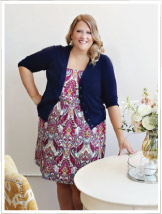
Alexa’s Photography | Southern Secret Garden Shoot
So you’ve just gotten engaged, began the planning process, and suddenly it’s time to address the elephant in the room…your budget. You have a million questions racing through your mind such as will your parents have to pay for everything, what your fiance’s parents should be contributing, what you’re going to have to pay for, and so on. Don’t stress! You have probably never even thought about wedding budget etiquette, and most people who have not planned a wedding before are in the same boat! This is THE most difficult aspects of the entire planning process. But trust me, as soon as you nail your budget down everything becomes a lot easier from there on out. So, what are the answers to all of those budget related questions?
1. Where is your budget coming from? The first thing to consider when thinking about the budget for your wedding is who plans to contribute. It could be that your parents wants to pay for everything, your fiance’s family have offered to be involved, or maybe you’re funding the entire event yourself. You may even have a combination of the three! No matter your situation, the most important thing is that you have it figured out ahead of time so you can get everyone on the same page. Sit down and decide what you want (in general) and what you realistically want to spend and then go from there. If you know exactly how much each person contributing plans to provide, this will make your life easier.
2. Traditionally, what should the bride/bride’s parents pay for? One thing that the bride’s family is typically expected to pay for is the church or synagogue and accompanying music during the ceremony (should you be using such venue for your ceremony). In addition to this, they are also traditionally expected to pay for the reception venue, entertainment, decor, and catering. Other items included in the parental budget includes floral arrangements for the church or synagogue/chuppah, bouquets for bridesmaids, photography, videography, invitations, announcements, programs, and guest transportation. The bride’s family should also pay for the bride’s dress, veil, and accessories.
3. What about the groom/groom’s parents? As far as the ceremony, the groom’s family is traditionally expected to pay for the marriage license and officiant’s fee. They should also plan to pay for the groom’s wedding day attire, the bride’s bouquet (in addition to mother’s and grandmother’s corsages) and the groomsmen’s boutonnieres. The honeymoon is another bigger aspect that the groom or groom’s family should typically take care of.
4. What does your wedding party pay for? Typically, the wedding party should pay for all of their attire including dresses, suits, and shoes. As far as deciding if your bridesmaids are going to get their hair and makeup done professionally, there is no set etiquette. It’s certainly a nice gesture to offer to pay for them (after all they have paid for their attire, travel arrangements if from out of town, etc), but make your decision accordingly. As far as pre-wedding celebrations go, either the bride or groom’s parent’s can host the engagement party and if both choose to host one, the bride’s parents’ should be held first. The bride should plan the bridesmaid’s luncheon/dinner and the maid of honor/bridesmaids should host the bridal shower(s) and bachelorette party. The groom’s parents traditionally pay for and plan the rehearsal dinner. The best man/groomsmen, of course, should host/plan the bachelor party.
So what does this all mean? These rules are not the end all be all to wedding budget decisions. It ultimately comes down to what is feasible and agreed upon with the families and other budget contributors. Tradition and etiquette is a great guide to get started with planning your wedding budget, but you should always plan according to your own personal situation.










